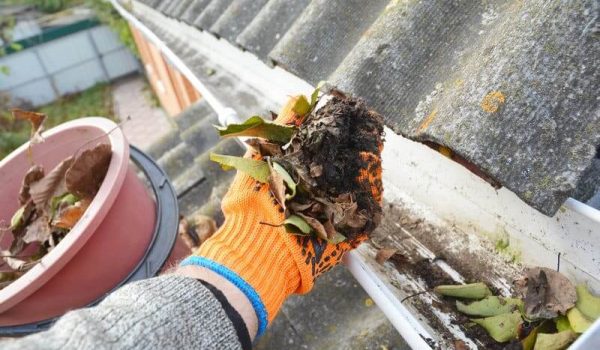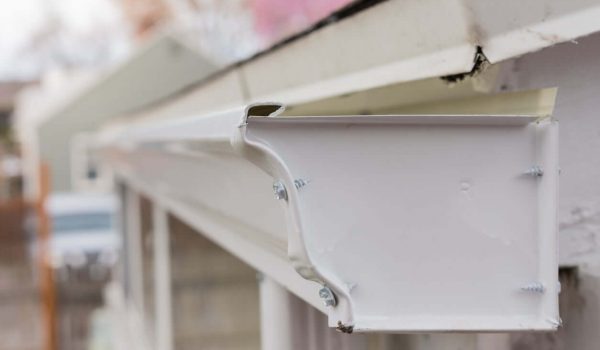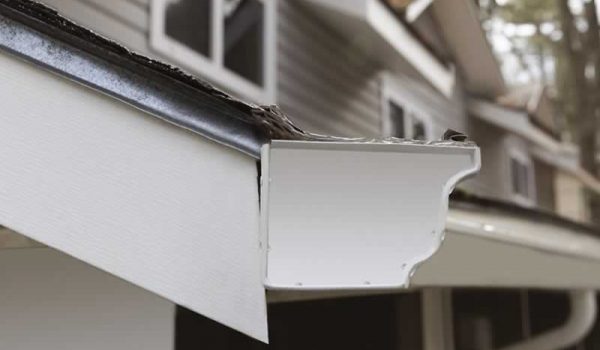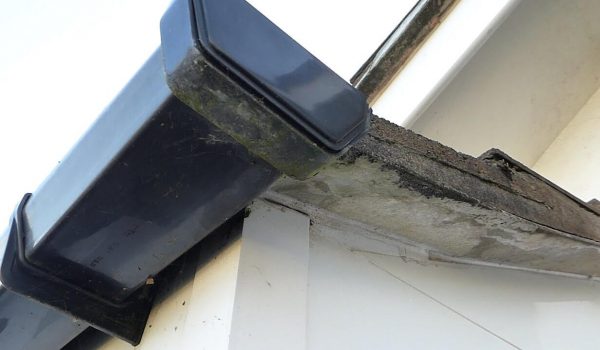DIY Leaky Gutters Repairing and Replacement
On This Page


Guttering can crack with time. Gutters are essential because they protect your home from water damage, roof leakages, dampness, rodents, and damaged foundations. Many people would call professionals to replace/repair them because it is no easy job. Some might prefer doing the job themselves. We will present in this article a DIY guide for fixing leaky gutters and leave the choice to you.
Tracing a leak and repairing a damaged gutter can come in handy, but first, you should be sure that your gutter needs repairs/replacement.
Definite Signs of Leaky Gutters
Gutter problems can cause severe damage to your home if ignored. If you are experiencing any of the following signs, its time to repair your gutter:
- Reverse/Overflowing Water from the Sides: Cracked gutters will leak water and may also catch debris which can cause a backflow of water and damage your walls.
- Signs of Water on your Basement Ceiling, Especially Around the Corners: The primary purpose of gutters is to make the rainwater flow through the downspouts located at all the corners of your house. This keeps it away from flowing down the walls into your foundations. However, if your gutters are cracked, water will seep down through the edges and into your foundations. The presence of mould and dampness is also a sign of leaky gutters.
- Water Collecting in the Gutter: Blocked or backed-up gutters will not give any passage to water for flowing out; that is why you will find them with water in them all the time. This can cause corrosion, attract insects, and attract rodents.
- Water Stains on your Exterior: Exterior walls and fascia board with numerous water stains are a clear sign of leaky gutters.
- Peeled Paint: If the paint around your doorways and window frames is peeling off, you might have leaky gutters.
- Erosion: If your landscaping is washing away or you often find puddles in your yard, you may want to check your gutters.
Step-by-Step Fixing of Leaking Gutters
If any or more than one of the above signs is visible, you have leaky gutters. However, if you want to be sure, try inspecting your gutters right after a rainfall. You would be able to see all the points where water is overflowing or dripping. Another way is to flush your gutters with a hose pipe and inspect the water flow. Once you have identified a leak, it is time to fix it.
Step 1: Get All the Required Tools
You don’t need any advanced tools or supplies to fix a leaky gutter but make sure you have the following:
- Ladder
- Measuring Tape
- Rubber Sealant or Silicone Caulk for Sealing the Gutter.
- Putty Knife
- Tin Snips
- Retractable Razor Blade
- Gutter Connectors
- Replacement Gutter
Step 2: Prep work
Wash the gutter completely using a soapy water solution to ensure a neat working surface. Use your putty knife or blade to remove any old caulk or sealant.
Step 3: Prepare and Apply the Sealant
Sealants come with instructions for preparation. Follow them to prepare a solution depending on the size or number of cracks. Apply the sealant or caulking according to instructions. Smooth the applied layer with the help of the putty knife. You can also use tape to cover any holes or cracks, but the best and most secure combination is a waterproof tape, sealant, and caulk.
Step 4: Remove Excess Sealant
The sealant must dry to take effect. Once it has dried, use the putty knife or razor blade to remove the excess sealant. If you want to cover the patching with waterproof tape, ensure the sealant is completely dry.
Replacing a Damaged Gutter
If there are too many cracks or holes in a single length of guttering, it is best to replace it together instead of patching it. Get the same brand and size from a hardware store, or take a piece to get the exact size.
If you need to shorten the length, you can easily do that with the help of tin snips. Measure the required size and cut the piece accordingly. This is an important step, and you should ensure the measurement. To be extra cautious, you can cut the length slightly more than the required length.
Step 1: Remove Your Damaged Gutter
Remove the damaged gutter section using your tin snips. Make sure you don’t damage the rest of the guttering. Remove any tape or sealant and detach the connectors.
Step 2: Connecting the Gutters
Use tape or sealant with your new gutter connectors and screw the two lengths together. Make sure they are tight.
Step 3: Check for Waterproofing
Once all the gutters have been reconnected, it’s time to check your installation for proper functioning and waterproofing. Using a hose pipe, let the water flow through your guttering and check the repaired/replaced parts. You may need extra patching if any repaired parts are still leaking. Appreciate your efforts if there are no leakages.


Installing Gutter Guards
Apart from getting damaged, gutters often become clogged because of other things, such as debris, pine needles, and leaves. Once that happens, water will spill over the gutters. Cleaning your gutters frequently may become tedious, and you need a better solution, such as installing gutter guards. They are also called leaf guards. They cover your gutters, allowing only water and retaining leaves or debris. This prevents your gutters from getting blocked. Gutter guards also prevent rodent and insect infestations. They can save you from the hassle of cleaning, especially if you live in an area with too many trees.
Types of Guards
- Micro Mesh: These are made from steel, aluminium, or plastic and are available for various prices. They have high quality and cost more than other types of guards. They are highly effective. They may require professional help for the installation.
- Foam Guards: They are constructed from polyurethane and are very easy to install. They can be easily cut to fit any length. They are considerably cheaper than other choices but have a shorter life span.
- Brush Guards: Just like the foam guards, these are also easy to install. You just have to place them at the bottom of your guttering. They usually last a year and can get clogged.
- Metal Guards: By far the best choice of all. They are strong and durable. You can easily install them. They can prevent leaves from clogging gutters, but they are unsuitable for smaller particles.
- Screen Guards: They are highly affordable and can be cut to fit any guttering. You can easily install screen guards without professional help.
How to Install Gutter Guards?
- Ensure your gutters are clean from all leaves, debris, dirt, old sealant, etc.
- Take precise measurements of your gutters.
- Read the instructions carefully.
- Install the gutters. Some are incredibly easy. Some require screws, rivets, or nails. Some are snap-on. You won’t need any tools for them.
- You can find countless YouTube videos that can guide you through the entire process.
Hiring Professionals
While leaky gutter repairs can be done with practice and knowledge, the damage is sometimes too much for a DIY installation/repair. Installing gutter guards can be pretty easy, depending on the type of gutter guards. However, hiring professionals for such installations and repairs is always better. Moreover, you may require professional guidance regarding the existing condition of your gutters. They might not be suitable for repair and replacement. You can easily find companies near you which provide these services. Do your homework before hiring a company. Look for the right experience and compare pricing with other service providers. Their website can tell you several things about them. Read customer reviews and ratings. Always use quality guttering and guards to ensure a long life span and durability.
